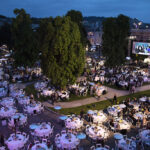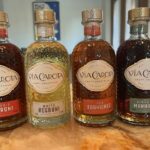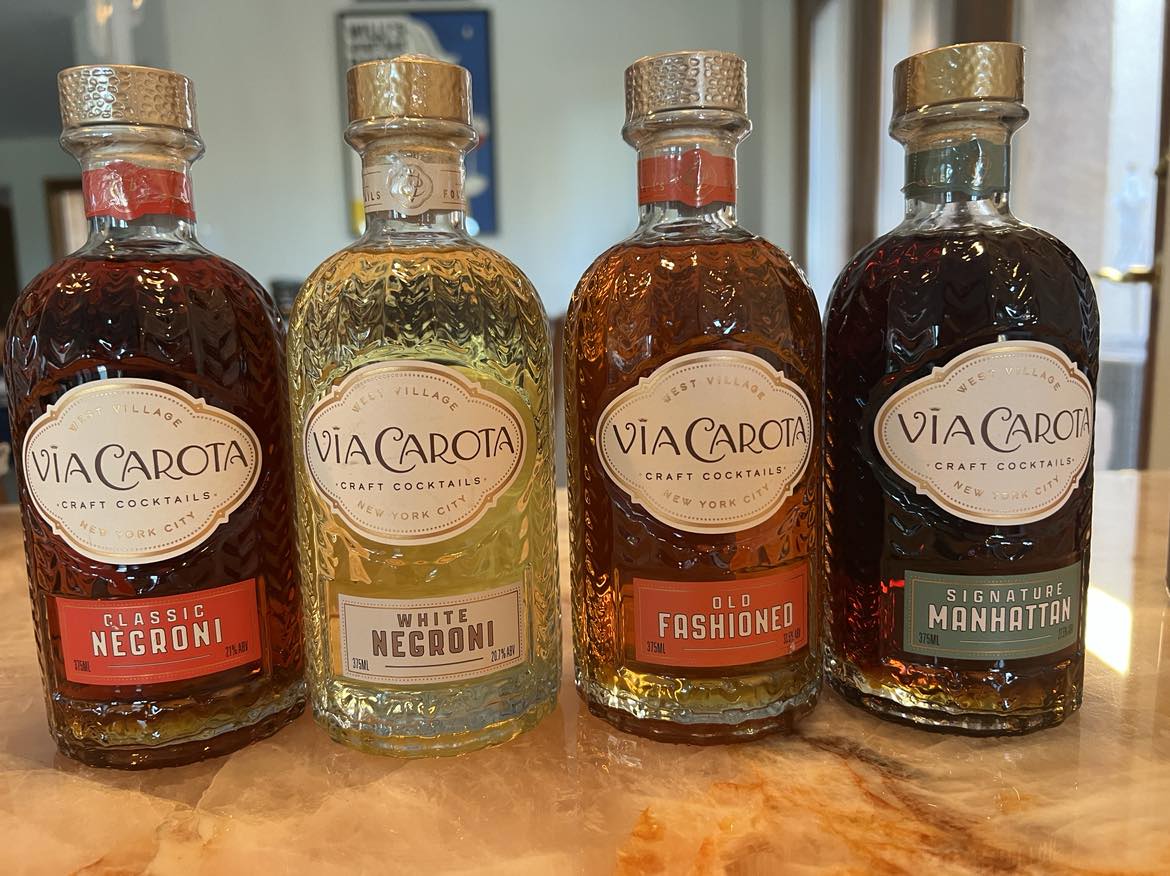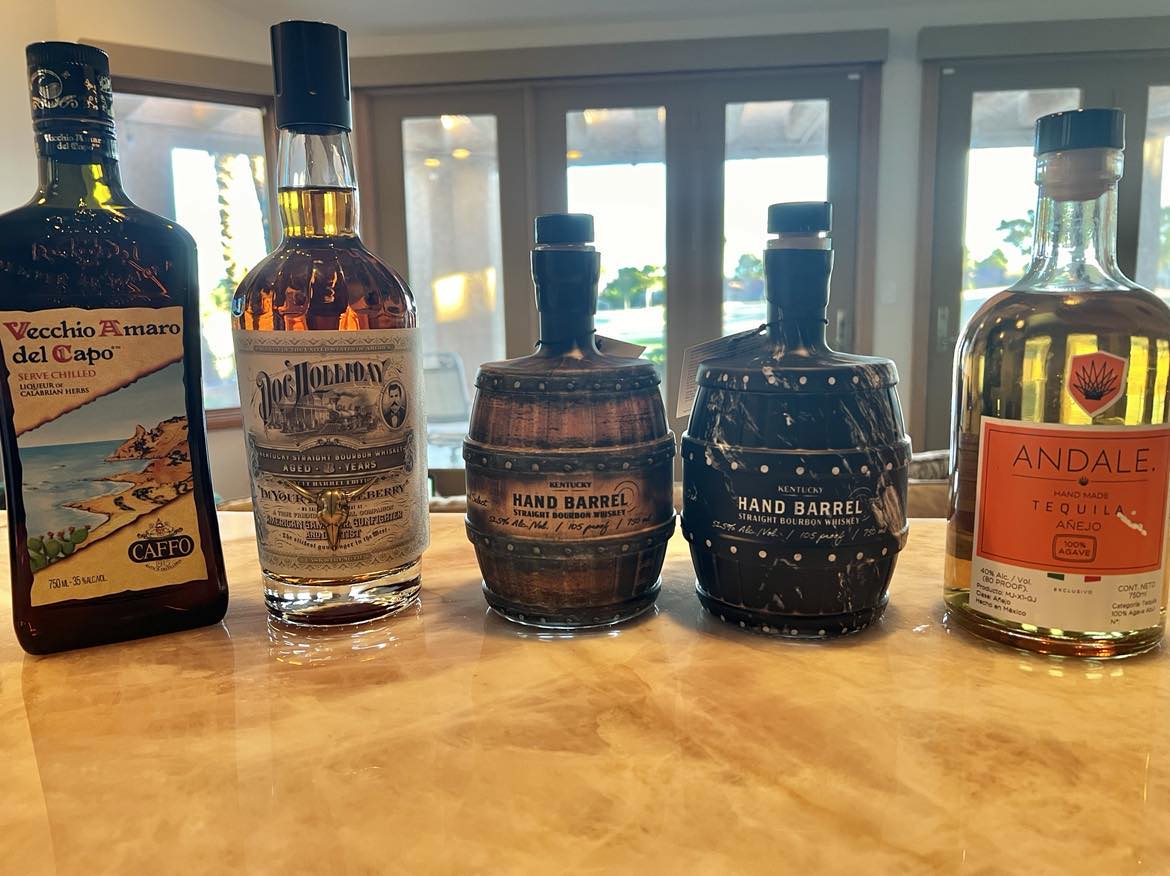This Grape of the Night meeting at Valencia Wine Company was very interesting. Not sure if it was because it followed Easter or that Rhone Reds produced no enthusiasm or interest for the group. I hope that it is not the latter. The group consisted of JD, Denise, Eve, Vic, Jeff, Tracy and myself. Julie was the only VWC Staff as Jeff was a participating member at this meeting. Needless to say we had some great and unusual wines from individual Rhone varietals to a Cote Rotie from France.
France is the home to this style of wine or grapes. The Rhone is divided into two regions, the North and South, with each producing different and unique wines. The Rhone Valley grows dozens of varietals both red and white. The belief in France is that Rhone grapes are meant to be blended. The US does not follow this philosophy as seen by the single red Rhone varietals that were poured during our meeting. In the US we see unique Rhone style wines that are using a primary or “honorary” grape that is not a true Rhone varietal such as Zinfandel and Petite Syrah. There are dozens of different varietals grown in the Rhone region of France. Let’s look at the differences between Northern and Southern regions of France.
The Northern region of Rhone grow and produce wines made primarily from Syrah. The best vineyards in Rhone have granite soils, and are on southern facing slopes, for example the Hermitage area. The name Hermitage means” chapel” and is so named for a single chapel on this hill. Hermitage is only one hill that is 300 acres in size where the soil consists mainly of granite. During the Syrah GOTN, a 1999 Chapoutier Hermitage was served. The Chapoutier vineyards occupy 175 of the 300 acres.
Examples of Northern Rhone wines:
· Hermitages – The region itself is only 311 acres of granite hills. Red Hermitage wine is made solely from the Syrah grape, and has been famous in France for centuries. Red Hermitage wines are known for their long life and robust flavor.
Cote Rotie – in English means “the roasted slope” or “the burning coast” referring to the long hours of sunlight that these steep slopes receive. The primary grape is Syrah and can contain up to 20% Viognier (white Rhone grape). Literature says that the Viognier is used for aroma. A close wine guru friend of mine told me that the French realized that fermenting the Syrah and the Viognier together (cofermentation) catalyze the process of color development and stabilization. This process has been adopted by the Aussies where you will frequently see the Cote Rotie style.
· Crozes-Hermitages – The largest appellation is Northern Rhone. Most of the wines produced are red wines made from Syrah that is sometimes blended with small quantities of white Roussanne or Marsanne grapes.
The Southern region of Rhone grow and produce wines made primarily from the Grenache grape along with Syrah, Mouvedre, and several other varietals. The wines from this region are medium in body displaying pepper, flower and spicy aromatics. One of the most popular wine styles from this region is Chateauneuf-du-Pape which allows up to 13 distinct grape varieties to be used in the wine blend. These varietals are Grenache Noir, Syrah, Mourvedre, Cinsault, Muscardin, Vaccarese, Picpoul and Terret Noir, all red. As well as such white varietals as Rousanne, Grenache Blanc, Clairette, Bourboulenc and Picardin. Chateau de Beaucastel Chateauneuf-du-Pape uses all 13 of the allowed varietals. Each varietal is vinified separately. Only the Syrah is placed in new oak barrels. The other varietals are stored in old large oak barrels in the Beaucastel cellars. The 13 varietals are blended in the spring following the harvest. Awhile back I wrote a blog on earthiness and old world flavors in wines. Beaucastel has received criticism of their wine due to the influence of Brettanomyces, a yeast that is present throughout the vineyard and winery, causing animalistic or barnyard aromas and flavors in their wine. This characteristic is either liked or disliked depending on the person that is drinking the wine. Some people find this unpleasant. It is very dependent on the concentration of Brettanomyces in the wine.
Southern Rhone blends are popular in Australia and California. An easy way to identify a Southern Rhone from a Northern Rhone is by the bottle. Wines from Southern Rhone have a cote of arms embossed on the bottle.
Examples of Southern Rhone wines:
· Chateauneuf-du-Pape Chateauneuf-du-Pape as explained earlier can contain up to 13 distinct grape varieties in the wine blend. The only winery that has successfully used all 13 grape varietals is Chateau de Beaucastel.
· Cotes du Rhone are AOC wines of the Rhone region, and consist of both red, white and rose wines. These wines are generally Grenache (reds and roses) and GrenacheBlanc (whites).
Wines Tasted:
2008 Miner Viognier Simpson Vineyard – Napa
Aromas: Green apples, citrus and lemon grass
Flavors: Minerality, green apple/citrus, clean, crisp, good acid balance, dry and not oaky
Winemaker’s notes: Winemaker’s Notes: Aromatically complex with citrus and honeysuckle notes on the nose and a plush feel on the palate, our Viognier consistently displays a fine balance of natural acidity and intense concentration. Sourced from John Simpson’s low-yielding vineyards in Madera, this quintessential food wine was whole cluster pressed and stainless steel fermented to allow the vibrant, tropical and stone fruit characteristics of this varietal to shine.
2004 Domaine de Mourchon Côtes du Rhône-Villages Séguret Grande Réserve
Aromas: Barnyard (Brett), gamey, bacon, duck fat
Flavors: Soft, needs more acid, black fruits, plum, boysenberry, currant and tastes young
Professional Notes: Wine Spectator gave this wine 90 pts.
2006 Frick Vineyard Cinsault – Dry Creek Sonoma Coast
Aromas: Provence heavy rose, cherry (cough drop) and redwood
Flavors: vanilla in the finish, cherry medicine and bright cherry
Winemaker’s notes: The owners of Frick used the proceeds from selling their 1957 Chevy to start the winery in 1976; Frick Wines are individually crafted by hand. Traditional time honored methods of wine making are employed; that include hand harvesting the grapes, punching the cap by hand during fermentation, soft pressing, no fining or filtering and aging in small oak barrels. Cinsault is a rare delicious Rhone variety. Found as a minor component in the blends from the Rhone. This wine is 100 % Cinsault, 100% grown in the Dry Creek Valley, Sonoma County. These grapes come from a small two acre plot in Dry Creek from 45 year old vines. This is a rare varietal with a small production in California and at Frick Winery..
2006 Denner Vineyard Mouvedere – Paso Robles
Aromas: Earthy/mushrooms, red fruit
Flavors: Cherry, dried red fruit and earthy/mushroom
2007 Sans Liege Groundwork Vineyard Grenache – Santa Barbara County
Aromas: Anise, red fruit and toffee/vanilla
Flavors: spicy vanilla on the back, cherry and finishes with chocolate
2006 Dutschke St Jakobi Shiraz – Barossa Valley
Aromas: Smoked meat/bacon, red fruit and toffee
Flavors: Blueberry
Professional Notes: Wine Advocate gave it 91 pts.
Even though I missed all of the other usual participants, I did enjoy sitting with our small group and looking at these wines. It was fun to find unusual varietals used in the Rhone region. Once again I would like to thank Julie from VWC for catering to our every need. I believe everyone in attendance enjoyed our trip through the Northern and Southern region of the Rhone Valley without leaving the comfort of our own valley. As always a great time was had by all and I look forward to seeing everyone next time for another adventure in wines.
Cheers,
Rusty Sly










